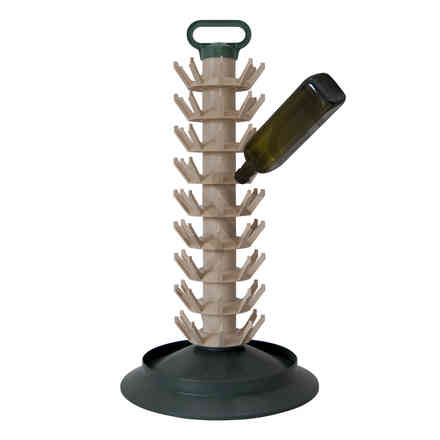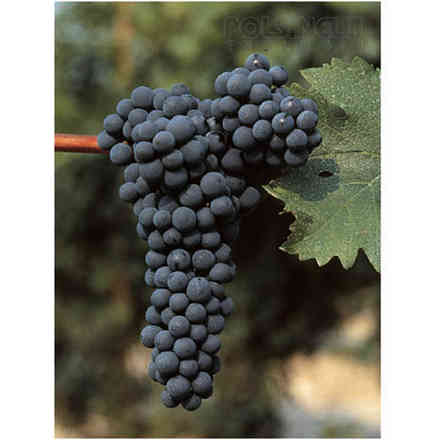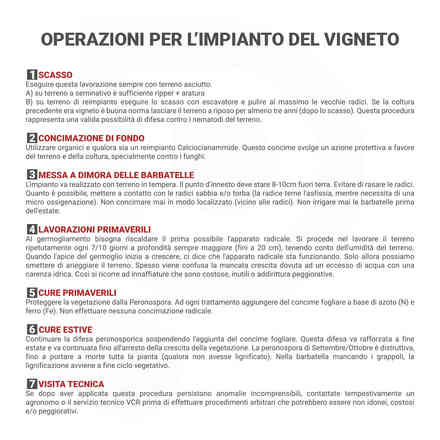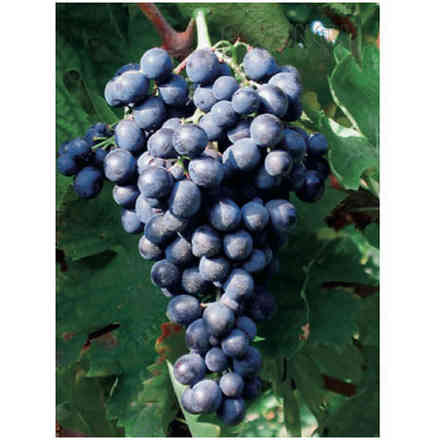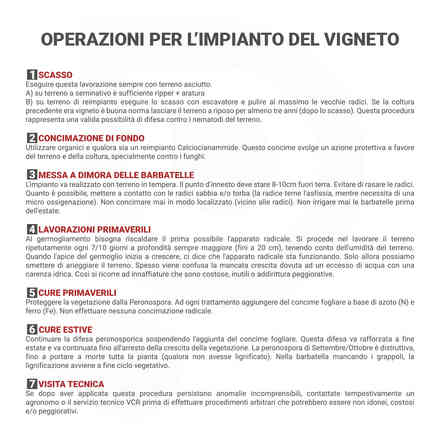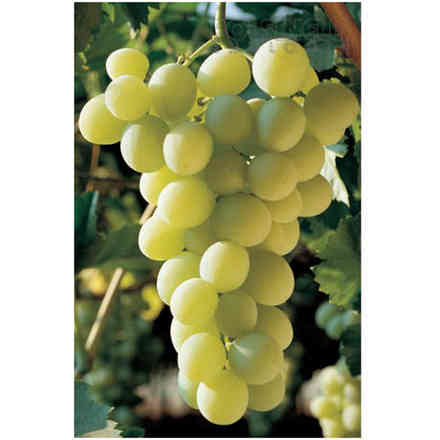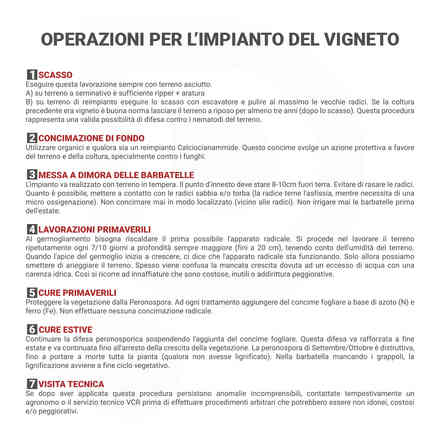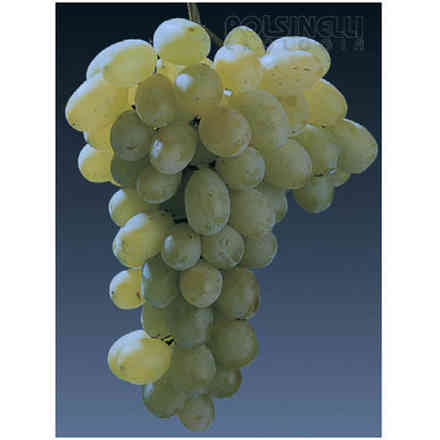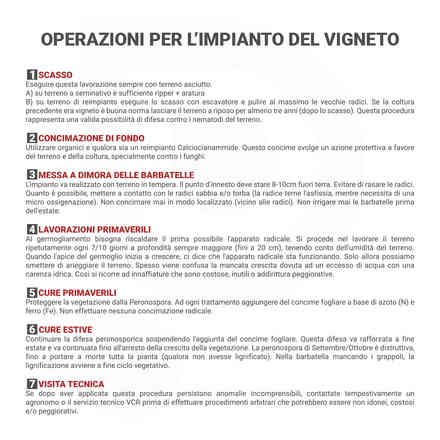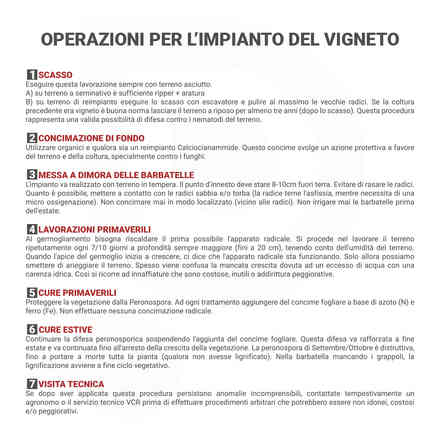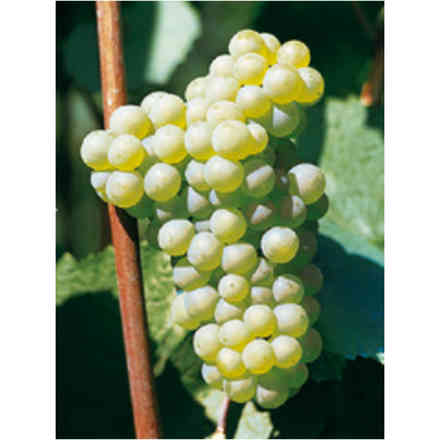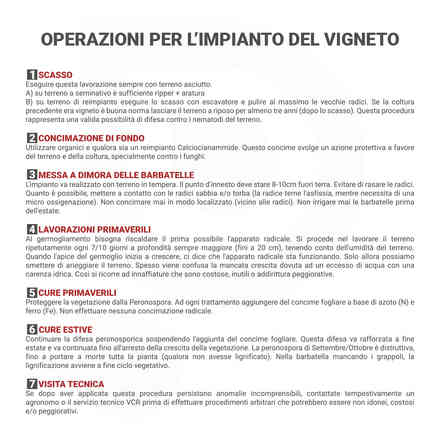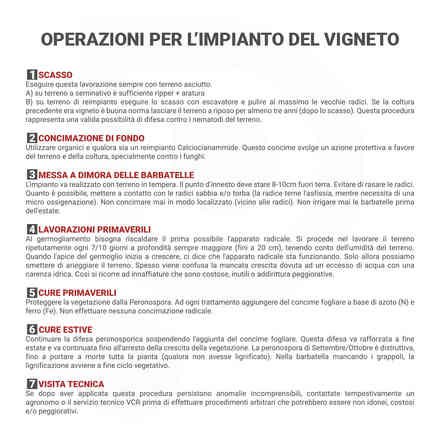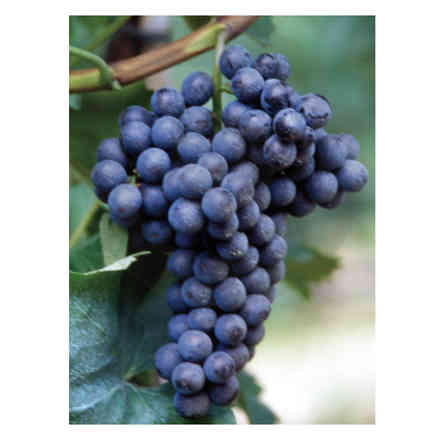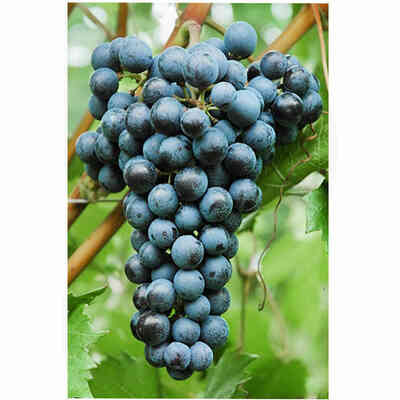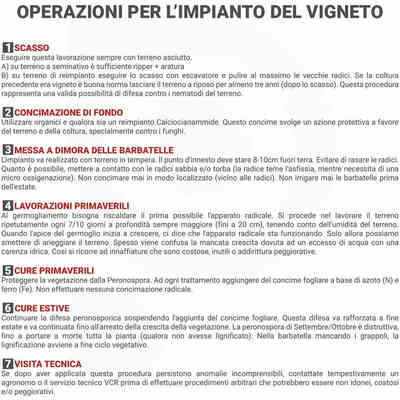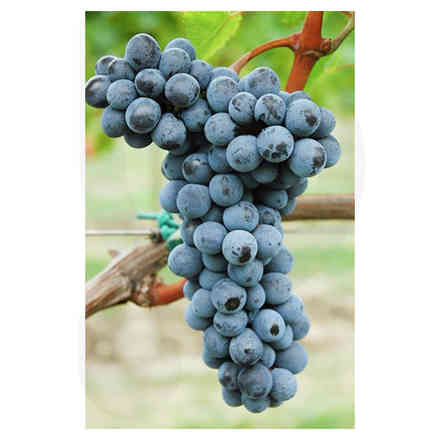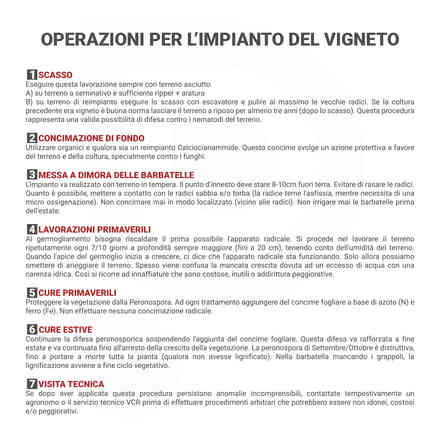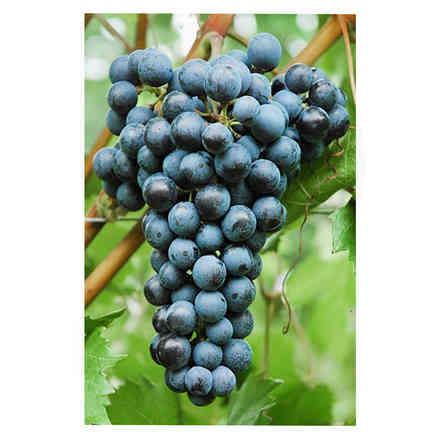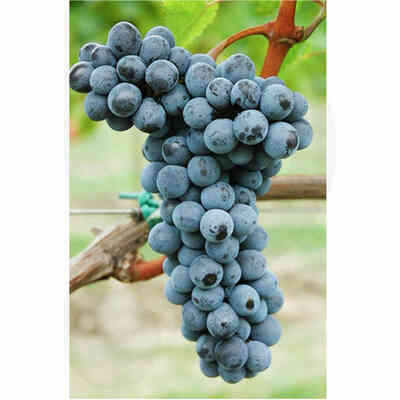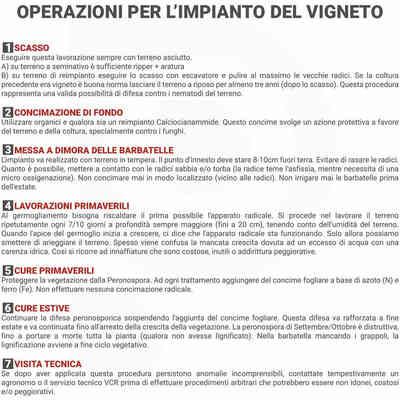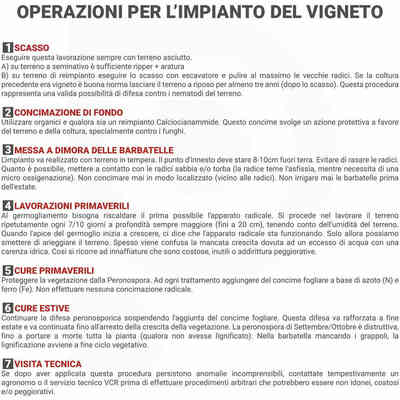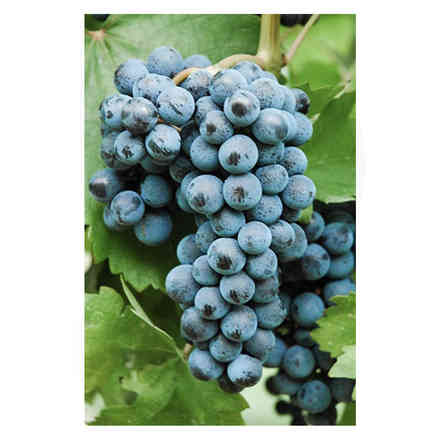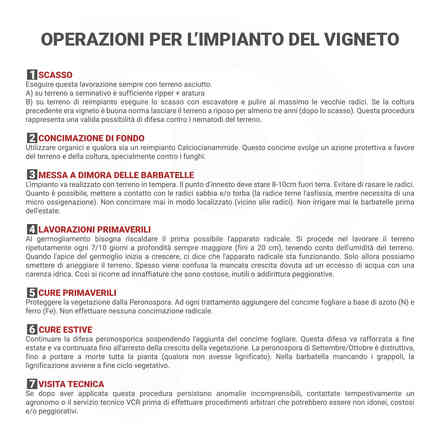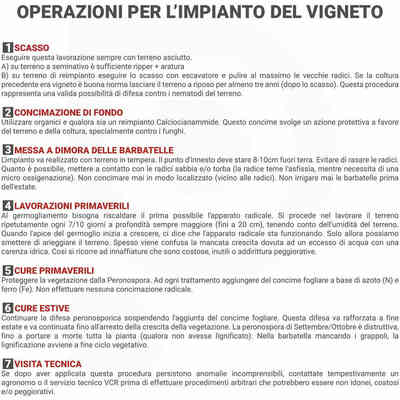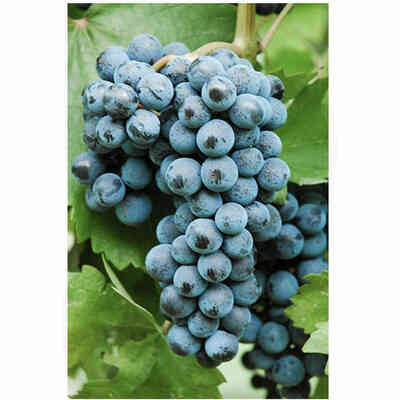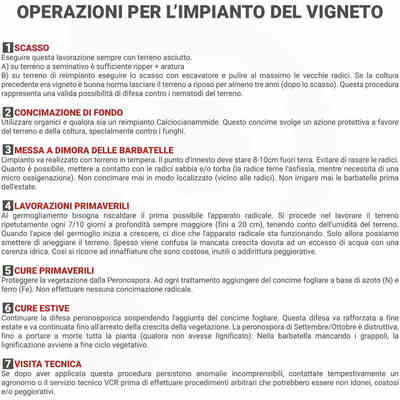
Merlot (10 pieces)
Description
 AUTHORIZED RETAILER
AUTHORIZED RETAILER
Barbatella Merlot (10 pieces)
Rootstocks 1103P - K5BB - S04 - 140RU - 420A (We will send the graft carrier available at the time)
It is the most widely cultivated vine in France (117,354 hectares in 2006); brought to Italy in 1880, it spread first in the Tre Venezie and then also in the more southern parts of Italy.
- Ampelographics: the variety is fairly non-homogeneous; the biotypes that make it up differ from each other in terms of fertility and bunch shape. Sprout with expanded, downy, whitish-green apex. Leaves are medium-sized, pentagonal, quinquelobate, wavy, blistered, green but not dark green, relatively tomentose even on the underside. U-shaped petiolar sinus. Cluster: medium, pyramidal, winged, more or less sparse, with more or less pinkish green stalk. Berry: medium, round, blue-violet in colour; skin of medium consistency, pruinose; juicy, sweet flesh with a more or less intense herbaceous flavour.
- Cultivation requirements: moderately vigorous vine with a semi-erect habit; short internode shoots with an overall balanced vegetation. Adapts to different types of terrain and climates, excluding those that are excessively hot and dry if not supported by frequent irrigation.
- Cultivation and pruning: adapts to different forms of cultivation and pruning; can therefore be grown easily even in free forms that can be fully mechanised, preferring medium pruning with 4-5 buds or long pruning (8-10 buds).
- Sprouting time: medium.
- Ripening time: medium.
- Production: abundant and constant; with the same number of buds it is more productive in long pruning systems than in short ones.
- Sensitivity to disease and adversity: poor, sensitive to grape downy mildew and sour rot. Fairly sensitive to winter cold.
- Oenological potential: gives wines of a certain finesse and typicality, with a fairly intense ruby red colour and a characteristic slightly herbaceous, alcoholic, fruity, aromatic flavour, with tendentially low acidity. In the hilly areas well exposed to the north, an excellent fine wine is obtained, even if not for great ageing. Blending or blending with Cabernets can complete its quality.
Clones in multiplication: Merlot R3, R12, R18, VCR1, VCR13, VCR101, VCR103, VCR488, VCR489, VCR490, VCR494, ISVFV2, ISVFV4, ISVFV5, ISVFV6, ERSAFVG350, ERSAFVG351, ERSAFVG352, ERSAFVG353; French clones: Inra-Entav 181, 184, 343, 347, 348, 447, 519.
Clones soon to be submitted for approval: Merlot VCR27, VCR28, VCR36, VCR37.
CULTIVATED AREA IN ITALY
YEAR 1970 1982 1990 2000 2010
HECTARES 53,158 48,176 31,872 25,615 23,141
AREA CULTIVATED IN FRANCE
YEAR 1968 1979 1988 2000 2006
HECTARES 25,124 38,391 60,007 90,059 117,354
RULES TO PLANT A VINEYARD
1. PLOW
You must perform this operation always with dry soil
A) On arable land is generally sufficient to ripper + to plow
B) On planting soil is generally sufficient to plow with an escavator and to clean the old roots.
If the previous crop was a vineyard, it is a good idea to leave the soil fallow for at least three years (after plowing). This procedure represents a valid possibility of defence against soil nematodes.
2. SOIL FERTILIZATION
Use organics and if it is a reimplantation, use Calciumocyanamide.
This fertiliser has a protective effect on the soil and the crop, especially against fungi.
3.PROPAGATING GRAPE VINE CUTTINGS
The planting should be carried out in temperate soil. The grafting point should be 8-10 cm above ground. Avoid shaving the redices. As much as possible, put sand and/or peat in contact with the roots (the root fears asphyxiation, while it needs a micro-oxygenation). Never fertilize in a localized manner (near the roots). Never water the rooted cuttings before summer.
4.SPRING WORKS
When sprouting, the root apparatus must be heated as soon as possible. Work the soil repeatedly every 7/10 days at increasing depth (up to 20 cm), taking into account the moisture of the soil. When the apex of the bud starts to grow, it means that the root system is functioning. Only then can we stop watering the soil. Failure to grow due to access to water is often confused with a lack of water. This is why watering is used which is expensive, useless or even worse.
5.SPRING CURE
Protect vegetation from Peronospora. To each treatment add nitrogen (N) and iron (Fe) foliar fertilizer. Do not make any radical fertilization.
6.SUMMER CURE
Continue with the defense against Peronospora by suspending the addition of the foliar fertilizer. This defense should be reinforced in late summer and should be continued until vegetation growth stops.
The September/October blight is destructive, to the point of bringing death to the whole plant (if it has not lignified). The rooted vine lacks clusters, so lignification occurs at the end of the vegetative cycle.
7.TECHNICAL VISIT
If incomprehensible anomalies persist after this procedure, contact an agronomist or the VCR Technical Service promptly before carrying out arbitrary procedures which may be unsuitable, expensive and/or worsening.























